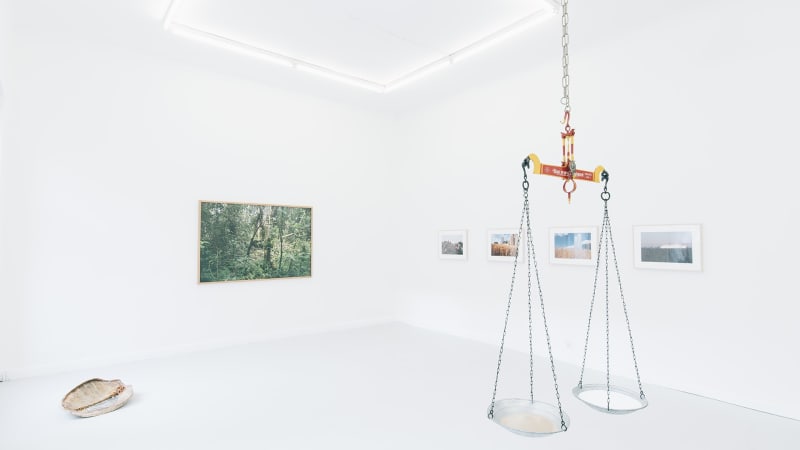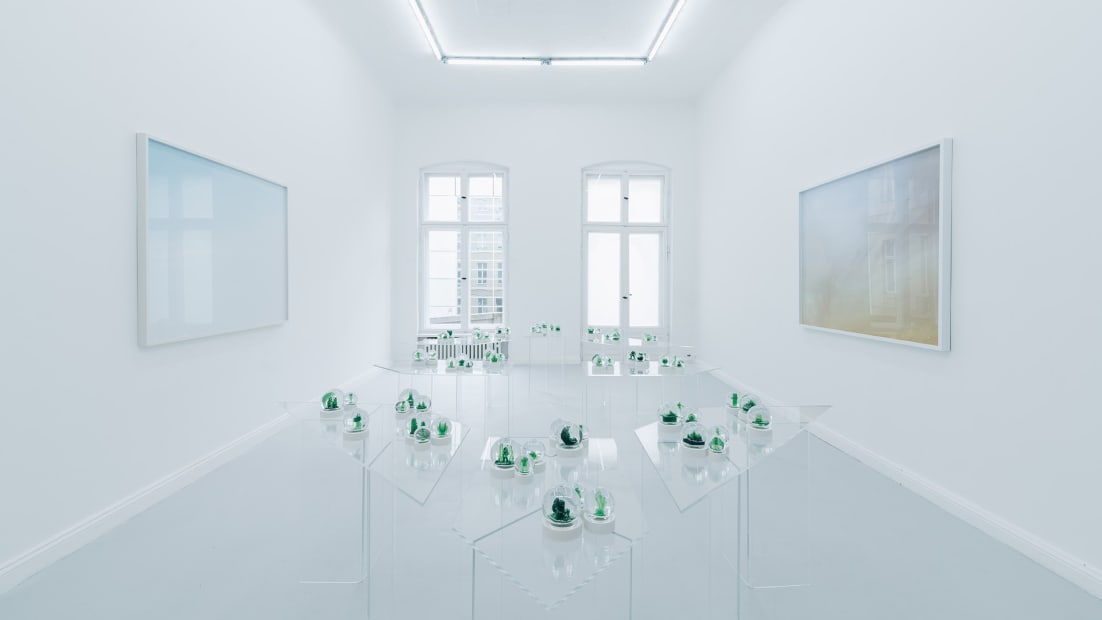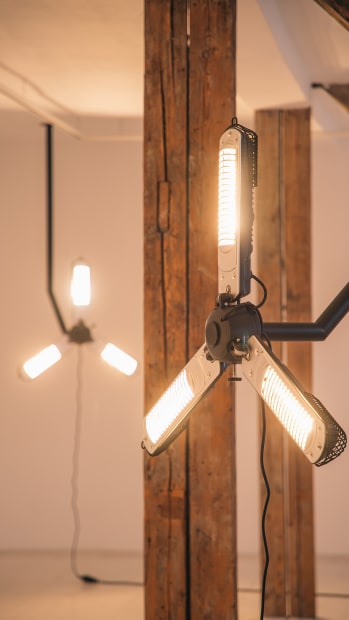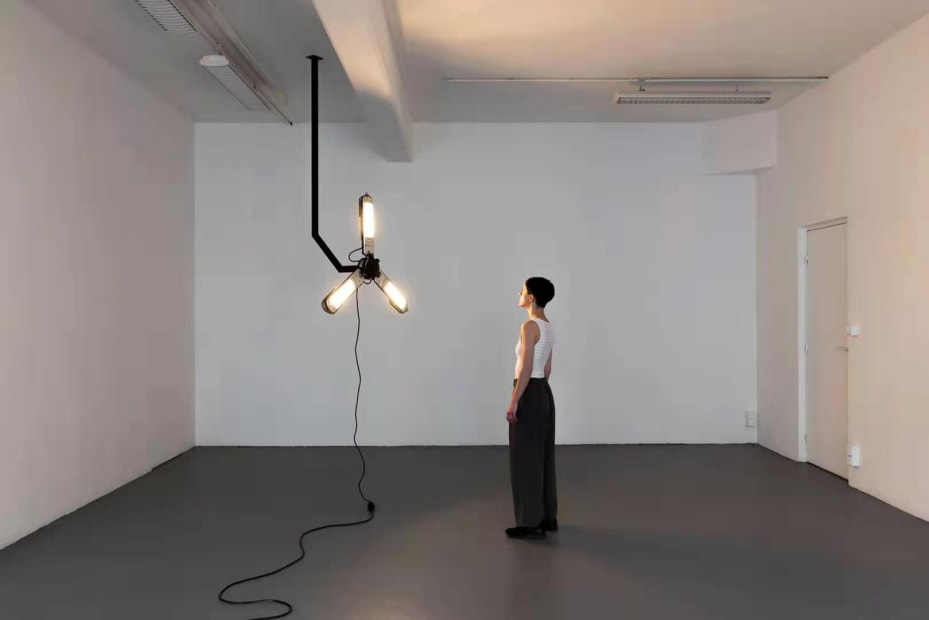A Year without the Southern Sun: Agnes Denes, Gordon Matta-Clark, Kévin Blinderman, Mathieu Kleyebe Abonnenc, Nadia Kaabi-Linke, Neda Saeedi, Rafael Domenech, Trevor Paglen, Yalda Afsah
The future of humanity is in question. In response to this unprecedented crisis, “A Year Without the Southern Sun” has gathered 9 artists to investigate the relationship between decolonization and current climate change. At the core of the exhibition is the ambivalence that surrounds the Anthropocene, that is, the confrontation of nature and human-made creations, which can be both violent and beautiful.
The exhibition’s title is inspired by the name given to 1816, known as the Year Without a Summer, after a catastrophic eruption in the Dutch East Indies (now Indonesia) caused a volcanic winter across the globe. The dust and fallout created atmospheric opacity that blocked out the sun for several months, leading to agricultural disasters and famine. This volcanic winter produced a “butterfly effect” that led to the creation of several masterpieces in art and literature, including extraordinary sunsets in J. M. W. Turner’s paintings and the writings of Mary Shelley and Lord Byron. However, art history has largely neglected artworks made in the Global South during this year.
Hence, “A Year Without the Southern Sun” brings together iconic works of North American post-war art that resonate with a diversity of contemporary artists from around the world. The works are subtle and enigmatic propositions about a human-made world that often seems beyond our control. Many of the artists, such as Nadia Kaabi-Linke, Mathieu Kleyebe Abonnenc, Neda Saeedi, Rafael Domenech, look at their family histories and the relationship to colonization and neo-colonization. While artists such as Trevor Paglen and Kévin Blinderman seek to use the very technologies of the state and advanced industrial capitalism to unveil the current contradictions that surround us.
Among the emblematic actions that responded to social crisis stands Wheatfield: A Confrontation (1982) by Agnes Denes, who currently has a retrospective at The Shed in New York. It is presented through four photographic documents taken during the process of planting. Denes harvested a wheatfield in Lower Manhattan’s landfill in Battery Park in 1982, a year after Ronald Regan became the U.S. president. The wheatfield was consciously positioned a block from Wall Street, at the foot of the World Trade Center and across the Statue of Liberty—an early ecofeminist action that poignantly relates immigration, world hunger and waste with economic mismanagement and international trade.
Nadia Kaabi-Linke presents, among other works, Salt and Sand (2016), a weighing scale—used in the Kolkata markets by street vendors—balanced with salt on the one side and sand on the other. Over the course of the exhibition, the salt absorbs the air’s humidity and the increasing weight of the salt changes the balance of the scale. While directly referencing decolonization in India and Gandhi’s Salt March, a nonviolent civil disobedience action, the work also reflects on the erosion of beaches and human-made environments by salt in the sea.
Similarly, Mathieu Kleyebe Abonnenc’s sculpture Le veilleur de nuit, pour Wilson Harris (2018) a tortoiseshell flipped on its back and partially drenched in a pool of metallic liquid gallium, evokes the conflicts aroused by colonization. The metal is illegal to mine in Germany but heavily mined elsewhere since it is needed for the production of semiconductors especially those used in smartphones. The eerie materialism of his paintings and photographs cast a line between his personal family history and that of semi-visible, ghostly, domination of capital in the age of post-colonialism.
Meanwhile, Yalda Afsah’s video Vidourle (2018), named after the river in Southern France that empties into the Mediterranean, shows men during a “toro-piscine” (a bullfight on the beach) but never reveals the source of danger. It is a dramatic rendition of man vs. nature witnessed by adolescent girls clutching to a fence in anticipation while adolescent boys prove their foolishness and courage as they taunt the bull’s incredulity.
Neda Saeedi presents a room-sized interactive installation of a futuristic garden of snow globes that is part of an ongoing body of work titled Parasitoid Cell of Desirable Future (2019 - ongoing). Dissecting the notion of gardening, its colonial and imperial dimension particularly as an impulse to collect, rename, relocate and fence-off, in this new work, the artist looks into the emergence of gardening video games—most of which foreground growth and cultivation—such as Minecraft, where the player exists as a plantation owner within a feudal system of market exchange and class division.
On either side of the garden are Trevor Paglen’s photographs, one of the so-called Untitled (Predator Drones) (2011) and the other the Untitled (Reaper Drone) (2010)—both deadly weapons of the military-industrial complex. With these beautiful prismatic skyscapes, Paglen makes the otherwise invisible visible, that is, our ambivalence.
Upstairs, this tension with attraction and danger is also produced in Kévin Blinderman’s two works X (2018), which are modified readymade outdoor heaters (the type being outlawed in France for the CO2 pollution they cause). Suspended from the ceiling, facing the viewer at eye level, the warmth and light they project are at once seductive and harmful.
Gordon Matta-Clark’s iconic film Day’s End (1974). Made at the height of the building’s use as a gay cruising ground, the film follows the artist as he cuts floors and eventually a breath-taking elliptical hole in the river-facing wall of Manhattan’s derelict Pier 52. The majestic action epitomizes the marriage of an abstract modernist sculpture and interventionist performance to create a modern day gesamtkunstwerk. Using an architectural symbol of New York’s de-industrialization, Matta-Clark brings light into a community and a structure cast in civilization’s shadows.
Finally, Rafael Domenech presents three bodies of new works across both floors from his ongoing series, Poem for 25 Panels (2020), Untitled (tactical occupation) (2020), and Collapsible Archive (efficiency to occupy space) (2019-2020), which reconfigures generic everyday objects as well as photographs from his personal archive into lamps. As a standardized unit, organizational mechanism and an architectural device, the artist considers these as books, as a site and source for knowledge. Above the space, he creates a constellation between the lanterns and poetic fluorescent light bulbs, which invert the position of the sky and the garden.
“A Year Without the Southern Sun” is not a thematic exhibition. Instead, the correspondences among the works cast a prismatic light upon artists reflecting on the current crisis of humanity, one that presents itself urgently but without despair. Through both reconstruction and destruction, the works in this exhibition mold the material of social reality into new forms. “A Year Without the Southern Sun” puts forth various ways in which we can transform, positively or negatively, our lived environments and through it also ourselves.
Text written in collaboration between Justin Polera and Laurie Rojas.






